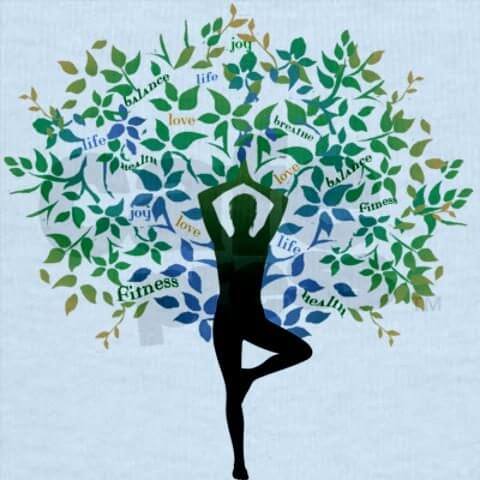
In the previous article, we looked at the unconscious but very powerful motivation that drives our decisions – the so-called “tribal beliefs” and the rules based on them.
We have found that we are still driven by the same fears and desires today as we were thousands of years ago, when we lived in the wilderness and our survival was conditional on being part of a larger community. The worst that could happen to us was to be ostracised or isolated, because to be excluded from the tribe was almost certain death. (Today, this kind of tendency manifests itself in the fear of rejection.)
So, willingly or unwillingly, we obeyed the rules of society or followed the leadership and complied with their demands. This impulse is still present in us today, in the form of the desire to be liked and accepted: we want to please the people we think we depend on.
Our beliefs make up our personality

The decisions dictated by such tribal beliefs are often not rational. What is more, many times we may be mentally aware that we are not acting in our best interests, but we are simply unable to move forward.
(EXERCISE: How can we realise for ourselves that we are not using our own potential to the full? Let’s imagine that a friend of ours lives exactly the same life as we do. He or she has the same job … experiences identical feelings towards colleagues … has the same personal life … earns the same money and spends the same money on the same things … spends his or her time in exactly the same way … makes identical decisions as we do, and so on.
The key is to see the person in front of us, as if on a film screen or a screen, because the change of perspective – from being an active participant in the experience to being outside the action and an outside observer – awakens completely different emotions and shapes a different view of the situation. When we really get a feel for that person’s life, we ask ourselves, ” If I could give my friend advice on how to get more out of his life, what would I suggest?” The difference between your current situation and this suggestion represents your potential for growth.)
Unfortunately, these firmly rooted and irrational beliefs cannot be changed by a logical approach. Not even with strong will and commitment. According to Dr Bruce Lipton, former lecturer at Stanford University, these beliefs are a million times stronger than conscious effort and work 95% of the time.
Because they are based on providing basic security, they are so embedded in our subconscious that they have become part of our personality. In other words, when we live in accordance with them, we have a completely neutral feeling; as if nothing special is happening in our lives, or that we are relaxed, calm and almost emotionless.
But it isn’t. Well, we can be emotionless, of course – if we have learned how to numb ourselves – but it is certainly not a state of peace, in the sense of a complete absence of action. There is a lot of activity going on, but in the background, or beneath the surface. Similar to the way an antivirus program works on a computer. It may not show that it is active in any way, but in the background it is always on the lookout for possible threats.
As long as nothing special is going on, these activities are not perceived below the surface. But when something happens that could threaten the inertia of the established business, they come to the fore to protect the status quo.
Our state of “peace” is actually an active state of balance …

This means that our “normal state” is actually a state of checking and maintaining the circumstances we approve of.
Let’s look at an example. Let’s assume that our “normal situation” means that we have (God forbid) a regular job, that we pay our bills on time or meet our financial obligations, that our children are at least roughly “hard-working” and successful at school or are able to take care of themselves, that we have orderly relationships at home, and so on.
As long as we operate within these circumstances, “nothing happens” or the day is the same as a day, without any particular positive or negative emotions. One could even say that we live in peace.
If any of this breaks down or becomes compromised, unpleasant feelings can arise: anxiety, depression, mania, etc.
Does this mean that in the previous state of “calm” we were passive, but now suddenly there is some activity?
No. In the previous state, we were actively balancing life’s circumstances; like slamming on the brakes of a car on an incline to stop it sliding downhill. Since the result is an external balance or stasis, we can have the impression that everything is at rest.
Actually, we were spending quite a bit of energy at the time: to constantly maintain a “thermostat” or to express specific beliefs … to maintain the desired circumstances … to keep an eye out for possible dangers … to protect ourselves in case the inertia of this state of affairs is threatened (read: when the neighbour drives home with a new car, we have a speech ready as to why we, with higher family incomes, can’t afford it), and so on.
Let us not forget that this outwardly neutral state of “peace” also includes our attitudes and beliefs towards important things, people, past events and so on. Any position taken that represents a swing of the pendulum away from the equilibrium position requires our commitment.
It takes a lot of energy just to suppress the unpleasant feelings that come up now and then – or to manage them, or to give the appearance of indifference …

We only realise how much of our life energy is stuck in the past and in these beliefs when someone rubs salt on a painful wound, for example, reminding us of an unpleasant event or of a person who once deeply disappointed us (and whom we still have not completely forgiven; forgiveness, by the way, means that we see that person in exactly the same way as we do other people today, or in the same way as we did before the unpleasant experience).
Then, in an instant, powerful emotions that have been simmering somewhere beneath the surface are awakened… and may even be eating us up inside. (We’re talking about so-called cellular stress, which is the main culprit in illness.)
So “peace”, or a state of apparent inertia or stagnation, is far from a state of inactivity or passivity. Thomas Keller, the great American esotericist, vividly described this situation as “financing enemies with one’s own life energy”.
He gave an example: ‘If you want to hate Hitler (thereby maintaining your own state of equilibrium, or expressing a certain conviction that achieves a state of moral satisfaction, op.a.), you have to know his teachings and his work very well.’ So you have to spend your time, energy and maybe even money studying what you will later hate.
It is therefore highly recommended that we learn to move beyond this state and regain our stuck energy.
The solution: a leap to the next level

When we think about how to resolve this situation, we have two options to choose from:
- Consequence management: staying stuck in entrenched beliefs and all the challenges that come from them and learning to manage them,
- Elimination of the cause: or we can rise to a higher level, which automatically takes us away from the trials.
For example, when we want to cross a rainy river, we can learn how to wade safely across it without getting swept away (the first solution). Or we can invest some energy in finding a bridge or crossing to the other side on dry land (the second solution).
Or: You can walk along the road, shrouded in fog, and try to reach your destination safely and fairly quickly (the first solution), or you can climb up a slope that the fog has not reached and walk along a sunny path (the second solution).
The first option requires less energy, but the results are not sustainable. Above all, our lives do not change because we are only looking for temporary diversions on the existing path… which sooner or later return us to the old tracks. It’s like when we decide to stick to a diet and exercise for a period of time when losing weight, but at the same time our minds are already on sweets and other (currently forbidden) treats that we will indulge in as soon as the time for dieting is over.
The other option takes us to a whole new life. Not only do all the challenges of the first option disappear, but we live a different life.
Yet most of the time we succumb to the first option: we learn to “manage stress” (instead of choosing another job where we would enjoy ourselves and not experience stress at all) … we grudgingly tolerate relationships with colleagues, fellow workers, acquaintances (instead of standing up for ourselves and stop being seemingly friendly and helpful to everyone). … learning austerity techniques and compromising on purchases and wish fulfilment (instead of, for example, opening our own business and cashing in on the information we generously share around for free), and so on.
It is not so much a lack of information, but being trapped in the inertia of the status quo.
It takes courage, energy, determination and perseverance to break out of the rut. The new path is always uncertain and uncomfortable. We experience doubts, fears, doubts, feelings of discomfort, etc.
Of course, because that is normal when it comes to novelty. If we did not feel the same way, it would mean that we had not decided to make a serious change… but, in all likelihood, we would have just chosen a new option in the context of operating at the same level.
But it is worth the patience.
How to fix problems at the root causes

The leap to the next level is always through choosing a goal and a vision that energises us. We need to feel a strong charge and great joy, because we will need this energy to keep going. When there is an obstacle on the path or a lack of energy, we will return in our minds to that moment of decision for a new path that will lift us up again.
Therefore, the stronger the initial charge, the easier the decision and the greater the chance of success.
That said, let us be prepared for everything to change. Personal transformation, through the principle of ascension to a new level, or through a new direction and the pursuit of a goal we are passionate about, literally moves us into a new world. When “something inside us” changes, we change the filters that dictate our view of the world.
We will be able to change our priorities and our outlook in key areas of our lives. We will start to notice new things in our environment that we used to think were unimportant or uninteresting. People will also “magically change” or leave our lives and new people will enter; people who are more in tune with our new image.
Practice for effective but easy change

These are the most difficult, but also the most important, decisions to move to the next level. Deep down, we all want to express ourselves, to contribute to the world, to help others, to find a mission to be proud of and to be known for, and so on.
In short, we want to lift ourselves out of the limited, confined world in which we feel trapped. Of course, almost all of us need a little help.
You can use the following advice. It’s very simple, but so much more effective. (Have you noticed that the simplest things are often the most effective?) Of course – if you use it …
We often wonder how to make a change or start a new life. We mull over the options in our heads, looking for a great idea that will take us forward.
In reality, you don’t need new ideas. You will be much more effective if you implement an existing idea that you already know and believe in, rather than if you look for new ideas (and then just mull them over, evaluate them, discuss them with others, etc.).
The procedure is as follows. Ask yourself what you already believe but are not (yet) living. For example, what you would like to remove from your life, or what you need to bring into it.
You can also ask yourself what you know would be good for you, but you don’t do it; or what is bad for you, but you persist in doing it.
That’s the first step… You only need one good answer. (Choose the one that gives you the most joyful feelings or carries the most charge.)
Write it down. You now have a guideline: you know what would be good for you. You have a vision. The path may still be unclear and you may feel uncomfortable at the thought of it, but that is logical.
The key to getting comfortable with an idea is not to rush it. Your only task is to read the answer every day and dream of the new state the answer brings you. Imagine that you have just reached this new state or lived differently. How would it feel? What would change in your life? What benefits would this new state bring you? How would others experience you? How would you feel describing this breakthrough to people you value and respect?
After you have done this for a few days, the perception of the end state that you have been experiencing so far through a feeling of “This would be good for me” will change into “This is my way”. And after a while, “This is my path, and it is worth following.”
You will wake up one morning and say to yourself, ” This is my only way… I can’t imagine living any other way.”
And that’s when it’s time for action. You have the inspiration, the energy, the will… The mind seems to have stopped resisting change too, so at every turn you will easily find reasons to take a new path. (As long as the mind resists, it gives us excuses and “logical facts” why it’s not good to take action, or why it’s better to stick with the old way.)
Help to personal transformation
If you want more encouragement in this direction, you can also get extra help. For example, mentoring.
Some time ago, Boris Vene a special workshop where he took the whole group through a personal transformation. Fortunately, he recorded the whole event on a tape recorder and it is now available to you.
At the end of the workshop, people were actually experiencing breakthroughs and deciding on new paths. You can listen to some short recordings and see if you could benefit from this kind of help.
In any case, don’t let your current comfort zone (s)remain a state of maximum satisfaction.
You deserve more … but you have to take it. No one is going to knock on your door and say, “Because you’re such a good person, I’ll take care of you. Tell me what you need …”
That’s not the way it works. You can never make someone so happy with your kindness and helpfulness that they will make you happy in return… and you will both be happy.
People you “make happy on purpose” will not usually return the favour. (If you make them happy with no hidden agenda, you don’t care how they behave towards you anyway, because you won’t have expectations of them…)
A goodness is not an orphan; an orphan is a “benefactor” who expects others to behave in a specific way towards him in return for his “good” deeds (read: to take care of him).
Rather, be the ruler of your life and give yourself a gift. Make a decision, take a new path and persevere.
Think about how much energy and time you have given to others in your life. Isn’t it time you took similar care of yourself?
Based on materials by Boris Vene and Nikola Grubiša.
